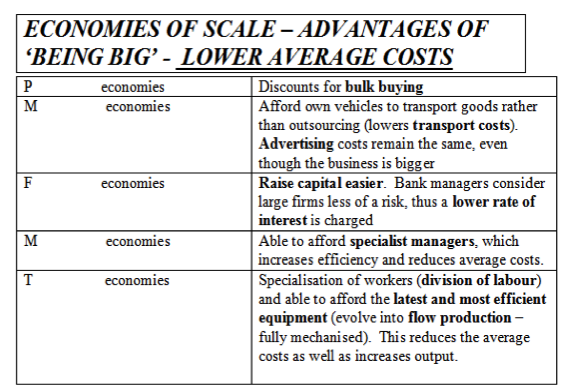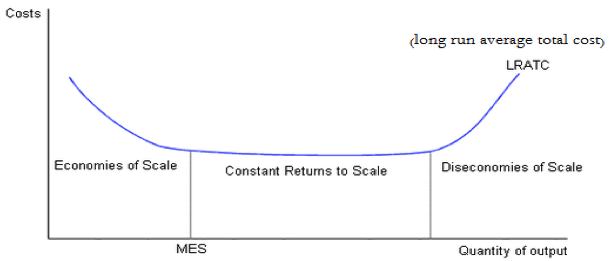Barriers to Entry
Barriers to Entry
4.1.2 is very much about common sense and your AS knowledge should provide a basis. Reflect upon the economics definition of the words in red below:
-
Define contestability and ease of entry
-
Explain how the following can be barriers to entry for a market:
-
Product differentiation, branding, start-up costs, intellectual property rights, R&D/technology change
-
Outline the impact of barriers to entry on market structure
-
Define economies of scale and outline its impact on costs/price
Define contestability and ease of entry
In some sectors entrepreneurs can create a start-up really easily (e.g. your own online business selling knitting!). In others it may be practically impossible to start from scratch (e.g. set up your own supermarket!). In the former case, the market is said to be contestable, because competitors can easily break into it.
In the latter case, barriers to entry (obstacles to setting up shop in a market – examples to follow later) make it both difficult and expensive to start a new business. Easy entry means that a relatively small investment will be sufficient to start a business. Someone with a good idea and appropriate skills will have costs of production that can be covered at a reasonably competitive price. Entry may be easy for small new businesses, but also large businesses seeking to diversify their product range may have the necessary resources to enter the market. Examples might include bed and breakfast or accountancy services.
Barriers to entry can range from modest to highly significant.
The following can be barriers to entry for a market:
Product differentiation / R&D and technology change - Creating a distinctive new product may require extensive R&D, thus this can be a barrier to entry.
Branding - Brand loyalty not only reduces price inelasticity but may make it difficult to market a competing product, thus a barrier to entry.
Start-up costs - High start-up costs can make entry almost impossible. Many kinds of manufacturing processes require major investment in capital equipment, training and research, making entry very difficult. Even if you take out example of setting up a new supermarket the start-up costs alone would be a significant barrier to entry!
Intellectual Property Rights – IPR act as a significant barrier to entry in tech fields, such as smartphones etc. The competitors in this industry are big enough to pursue copyrights and trademarks in the courts, thus a significant barrier to entry.
Outlining the impact of barriers to entry on market structure:
High barriers to entry make it likely that there will be relatively few competitors in the market, so markets for manufactured goods tend to be towards the oligopolistic end of the spectrum of competition. Successful businesses will be big enough to afford the initial investment and the costs of innovation. Analysis of market structure will usually require extended consideration of barriers to entry.
Defining economies of scale and outline its impact on costs/price:
Economies of scale were studied in section 2.1.1 - technical, marketing and risk-bearing economies are the most significant but also purchasing, managerial and financial . They account for the ease with which bigger businesses can cut costs; if there is sufficient competition they can lead to price cuts. They can create significant barriers to entry to smaller businesses who cannot execute these economies of scale and thus cost reductions.



